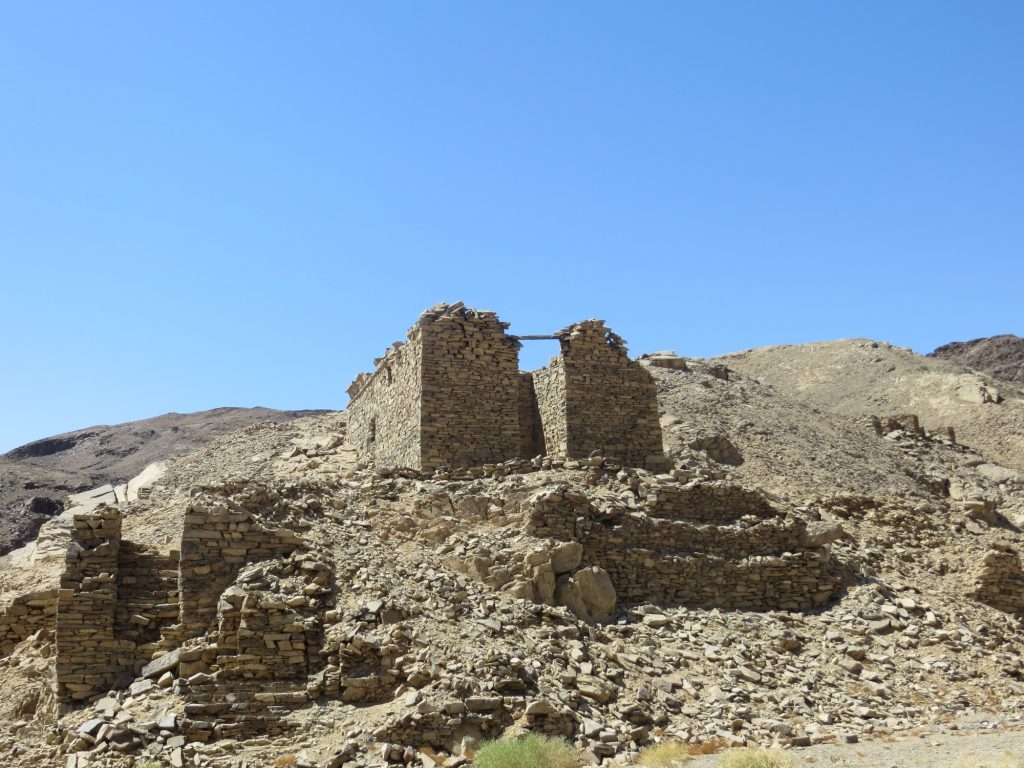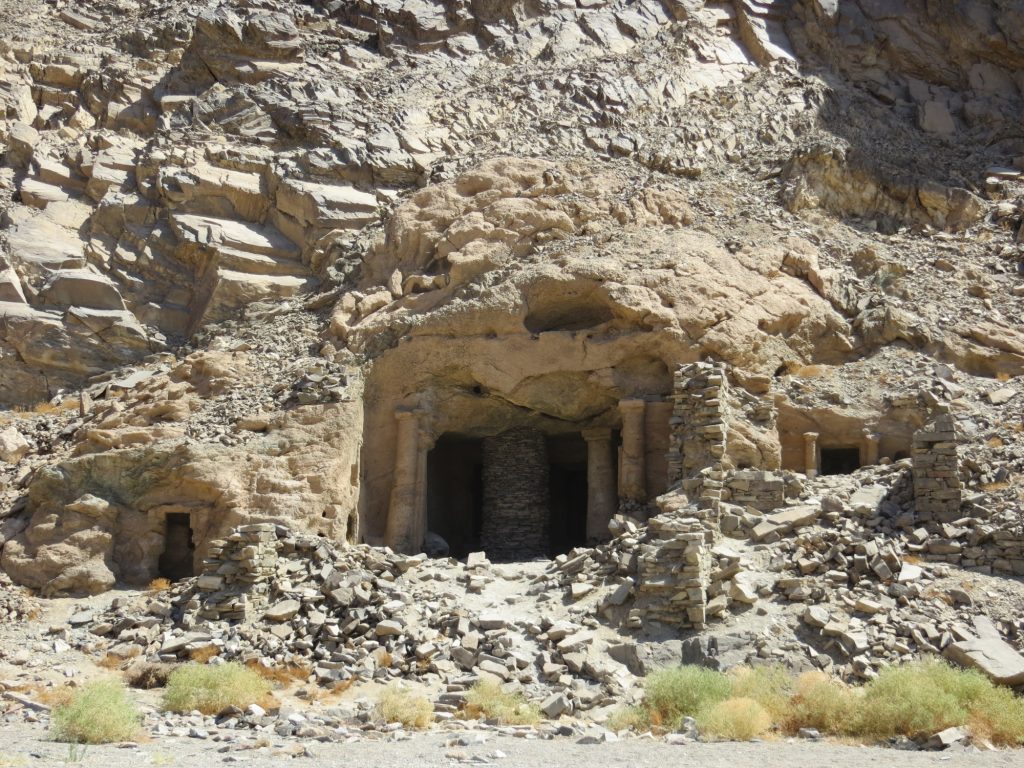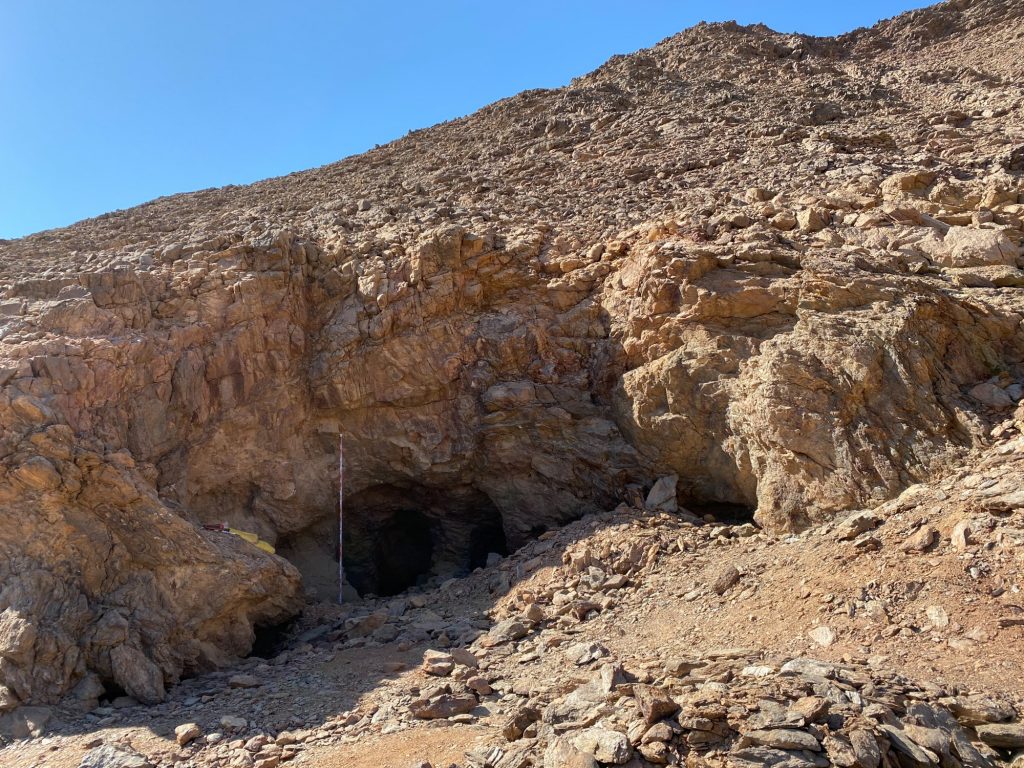Some time ago we wrote about the ancient port of Berenike on the Red Sea coast. This time we had an opportunity to talk with dr Joan Oller Guzmán from Universitat Autònoma de Barcelona, who in 2020 and 2021 conducted an archaeological survey in the Mons Smaragdus region of the Egyptian Eastern Desert. This region was known in Antiquity as the only source of emeralds within the borders of the Roman Empire!
We invite you venture further into this article, where dr. Guzmán tells us about exploring underground galleries and what they have found in the dungeons deep.

© J. O. Guzman
Archeowieści Editorial [AE]: You have been working in the Eastern Desert for a long time. What influenced you and your team to start your research in Wadi Sikait and to explore ancient mines?
Joan Oller Guzmán [JOG]: Our work in the Eastern Desert started in the Greco-Roman port of Berenike, where we made our first excavations in 2012-2013 as part of the American-Polish team working there. After some years in Berenike, the co-director of the excavations, S.E. Sidebotham, asked us if we would be interested in starting our own project in the area. So we decided to give it a try and, among all the areas that we knew thanks to the survey we did during these years, we thought that Sikait and the emerald mines were an amazing place to start a new project. After that, we spent a couple of years looking for funding and getting the permissions to work in Wadi Sikait and, finally, in 2018 we started our project in a scientific partnership with the Polish Centre of Mediterranean Archaeology, University of Warsaw.
AE: What is the chronological span of the explored mines?
JOG: At the moment, archaeology shows that the mines were exploited between, at least, the Early Roman and Early Byzantine period (1st to 6th c. CE). However, it is highly probable that the extraction works in the mines already started in Ptolemaic times. We have some materials from the Ptolemaic period at mining sites, also ostraca that mention emerald workers have been found dated to the Ptolemaic period and we found some references in the classic sources as well. Also, we know for sure that the mining works continued during the Islamic period and sites such Zabara reveal organized exploitation during this phase. After the discovery of the Colombian emerald mines, the extraction in Egypt ceased almost completely, and it was not revived until the 19th c. CE, with the rediscovery of the mines by the French geologist Frederic Cailliaud, who resumed works in the area with several attempts to reopen the mines, even into the 20th c. CE. All of these initiatives failed because of the low quality of the emeralds in the area and the logistical difficulties of working in this region. In any case, the major moment of extraction was between the 1st and the 6th c. CE.

© J. O. Guzman
AE: Speaking about mining and its surplus, how big was the scale of the emerald mining and did it have an important impact on the regional (or maybe state) economy?
JOG: It is still complicated to determine the exact scale of the emerald mining. It is precisely one of the aims of our project to offer an exact overview of the number of mining works in the area, but for this we will need more seasons. For the moment, our work in Wadi Sikait shows an extensive number of mining works that implies an intensive exploitation of the area. So far, some 150 underground mining structures have been identified. Most of them however, are just small tests only 5 to 10 meters deep. When ancient miners found a profitable vein, they started creating deep and complex underground structures with hundreds of shafts and galleries. The deepest one that we have documented comes in at over 30 meters in depth. On the other hand, we must consider that probably most of the work was not conducted in underground mines, but in open-air extractive works. In fact, the survey of the Wadi Sikait area shows clearly that open-air mining was the major activity of the emerald workers. Concerning the impact of the emerald mining on a regional scale, it is also hard to determine. However, we must not forget that we are dealing with a luxury trade well-integrated in an extensive trade network that connected the Mediterranean with areas such as India. The emeralds would be one of these luxury items moving along this network. Of course, we cannot compare it with other products coming from the Eastern Desert such as gold, but archaeological remains, and especially the magnificent Fayum portraits, demonstrate that emeralds were appreciated and quite common in Roman Egypt and the Roman Empire.
AE: ‘Whilst we’re discussing emeralds, were they the only gems present? Did the miners look for any other gems? What kind of archaeological objects are you finding in the abandoned mines?
JOG: In the Mons Smaragdus region the primary resource extracted was, for certain, emeralds. However, we know that since Ptolemaic times gold was also found in this zone (and local inhabitants still look for it). So the mine workers from places such as Sikait were basically dedicated to extracting beryl and most probably they were specialized workers. In fact, we do not have clear evidence for a massive presence of slaves working in the mines and the comparison with other areas like the imperial quarries also points to a majority of free specialized workers in the mines. Regarding the archaeological objects within the mines, after entering a lot of them we were quite impressed as to how clean they are and not a lot of material can be found inside. However, there are materials present. For example, we have found pottery (especially amphora for carrying water but also fragments of lamps for lighting the mines), several wooden tools, a large quantity of fragments of baskets for carrying out the beryl, fragments of textiles coming from the miners’ clothes, etc. Curiously, almost no fragments of beryl appeared inside the mines, which means that the workers did their job really well. Finally, the best surprise we got inside some mines is the presence of a quite significant number of inscriptions carved in the walls. They are still under study but they will help us to get a better understanding of how the mines were managed and who was working in them.

© J. O. Guzman
AE: Who coordinated the mining activity in the Eastern Desert in ancient times? Was it state-run or was it some kind of private initiative?
JOG: This is another interesting issue for which we still do not have a complete answer. It is clear that in the Early Roman period it was the Roman state that controlled the productive activities in the Eastern Desert. This is quite clear in the imperial quarries. With other resources such as gold, emeralds, pearls or amethysts we do not have a lot of data. We have some inscriptions from the first decades of the 1st c. CE that mention Roman officers charged with the direct control of the exploitation of the resources of the Eastern Desert, but this remains unclear for the second half of 1st c. CE. However our research in the mines is revealing a link between their exploitation and the Roman military. So our guess now is, at least in the Early Roman period, that the emerald mines were directly under the control of the Roman Empire. After the 3rd c. CE, this situation changes and a new actor enters the area: the local nomadic tribes of the Blemmyes. According to several classical sources, from the end of the 4th c. CE they were directly controlling the emerald mines. Unfortunately we still do not have enough data to determine how exactly they controlled them and one of the main goals of our project is to investigate the role of these Blemmyes in the Smaragdus, which has to be quite important if we consider that the creation of the main buildings at the site coincides with the Blemmyan dominion.
AE: How do you explore mines? I assume it has to be a little bit dangerous?
JOG: Exploring the mines is, of course, dangerous. Some of them have shafts tens of meters deep or really narrow galleries. To enter them, it is essential to have speleological equipment and some degree of experience. In our case, we have in our team an archaeologist that is also one of the most experienced speleologists in the world. With his guidance we have already documented over 1.5 km of Roman mining galleries. As I said before, the deepest point we have reached is over 30 meters and at some points the use of ropes to access these spaces within the mines is unavoidable. However, we must highlight that the general state of preservation of the mines is good and, for example, we have not found too many mines in danger of collapse. Another problem is related to the current inhabitants of the mines, with an interesting fauna that includes bats and more dangerous species such as snakes or scorpions.
AE: What are your plans for the next seasons?
JOG: The general aim of the project is to get a better understanding of the processes of extraction and commercialization of emeralds in the ancient world. For that, we have already conducted three archaeological seasons at Wadi Sikait and other sites in the Smaragdus region (currently the Wadi Gemal National Park). The next season will be in 2022 and the idea is to continue with three major objectives. First, the excavation of several structures in the settlement of Sikait, including temples like the Large or the Small Temple or some of the residential complexes located within the site. Second, to continue with the survey and documentation of the mines. In this regard, we will continue with the documentation of all the mining structures in the area and the detailed topography of the most relevant mines. Finally, to continue with the conservation interventions at the site of Sikait to ensure the preservation of its structures and contribute to the increasing value of the area from a cultural heritage point of view.
Article about project were published in Journal of Near Eastern Studies, 80/1 2021.
If you want to hear more about the Sikait project you can participate in conference Poles at the Nile, which is starting today . You can register at the official website of the conference.
This article is available for re-printing, without photos
Intreview by Jerzy Oleksiak
Editor: J.M.C
Proofreading: Stephanie Aulsebrook

One Reply to “[INTERVIEW] Rolling in the deep – emerald mines in the desert”